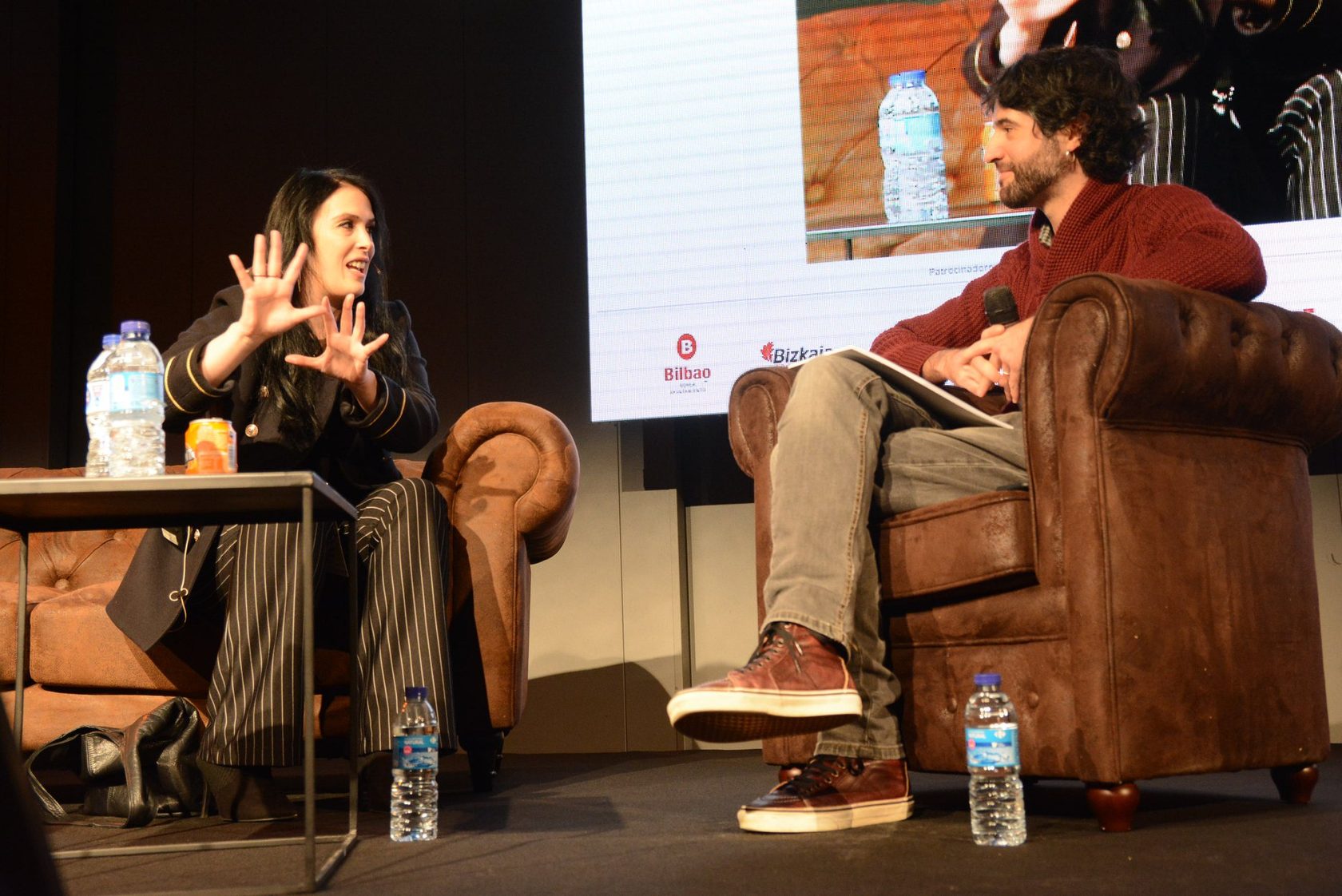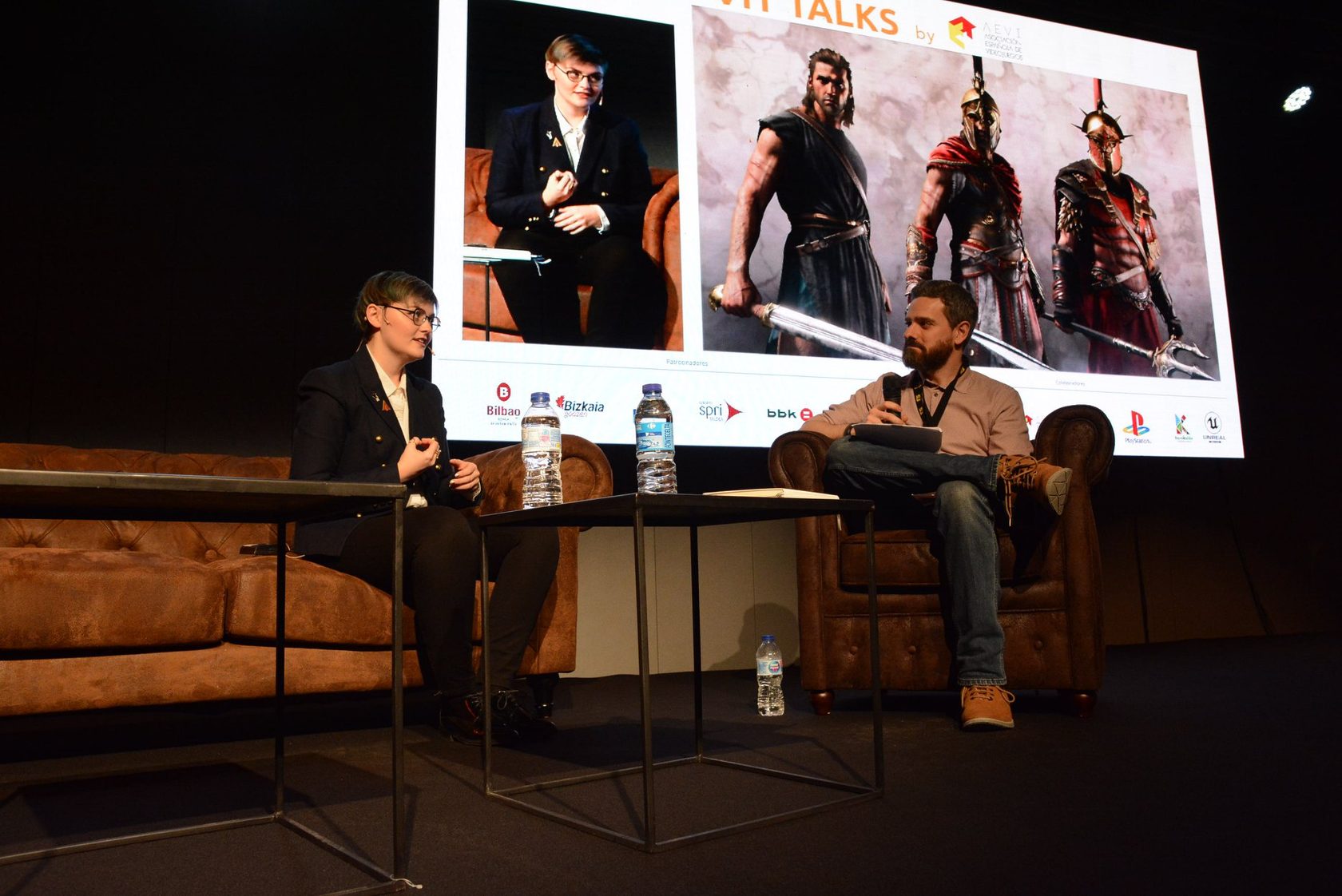Evolution of approaches to game scenarios
How the game script changed – from retroactive edits to an important part of the development process: the experience of Rihanna Pratchett and Melissa McCoubrey from Ubisoft.

The material is a translation of an article published on GamesIndustry by Matthew Handrahan. The Russian version of the material was prepared by Narratorika.
At the Fun & Serious Festival conference, Rihanna Pratchett and Melissa MccUbrey from Ubisoft told how game scripting evolved from “retroactive edits” into an important part of the development process.
Over the past 15 years, game development has changed 100,500 times. But few things have improved in it as much as the craft of writing.
The idea of this article was born from the proximity of two reports at the Fun & Serious Festival conference in Bilbao, Spain. The first one was made by one of the most famous and experienced writers in the industry. The second is a relatively new talent from a fresh big project.
The first speaker was Rihanna Pratchett, who hardly needs an introduction. You can argue as much as you like, but her most remarkable achievement is the reinterpretation of Lara Croft for the Tomb Raider series from Crystal Dynamics. As part of the work on the project, Pratchett was given a task, and most importantly, time and freedom to update one of the greatest icons of gaming.
But it wasn’t always like that. Pratchett recalls her first job as a game writer at Larian Studios, which she got after leaving her full-time position at PC Zone magazine. It was 2002, game writers survived as best they could – that is, they rarely even imagined how games were made.
“I didn’t know anything about game scripting at the time,” Pratchett says. – While I was a journalist, this was not necessary. No one sat down next to me and explained: “That’s a game writer.” Or even: “This is a designer who writes a little game texts.” No one talked about it at all. It was terra incognita.”
“The industry was still too young in terms of hiring writers –not narrators per se, but writers in general. When I asked about work, people said, “Uh, okay, we probably need help.””
“Everything happened very randomly when I joined the teams, and somehow it worked. I didn’t have mentors because most of the time I was the only writer on the team. I very rarely found myself in a situation where there was someone in the team who knew more about the topic than I did. I had to break through the narrative jungle on my own, as well as make mistakes and achieve victories on my own.”
Even when Pratchett figured out and began to understand the specifics of game screenwriting – different from writing novels or movies–the industry was still slow to figure out how to use it. Pratchett invented a term that succinctly expresses most of the works of that time that she was asked about: “narrative resuscitator” – that is, a doctor who is called in a critical situation in order to surgically sew a story to a game that needed to make sense.
An example that stands out from the others is Mirror’s Edge, a stylish parkour game that EA DICE released in 2010 and which is now considered an underrated classic of the Xbox 360/PlayStation 3 era.

Rihanna Pratchett has seen how the industry’s attitude to screenwriting has changed over the course of her career
“Everything was designed without a single thought about the narrative when I came to the project,” Pratchett tells the audience of Fun & Serious. “All the levels were ready, the game world was ready, the way the character moves around the world and the way the character looks was ready.”
“But no one had the slightest idea–why, why? No one thought why Faith Connors (the protagonist of the game) moves this way, why the city looks this way, and most importantly – do you understand why all this is happening?”
“Actually, it was done because it was cool or felt right, but no one thought about the “why” and “why”. I had to wrap the game in narrative. In any other entertainment medium, it would be working backwards.”
“It seems that this was my biggest order for narrative resuscitation, and I think we did everything we could with the resources that we had. But, obviously, if I had been hired earlier, this whole nightmare would not have happened and the script work would have been done on time.”
Pratchett assured the audience that there were worse stories. They are whispered by narrators after a couple of glasses at the bar. One screenwriter, Pratchett says, was asked to write 100,000 words in a week for a game that was already in a pre-release state. Another was hired to rewrite all the dialogues in the cut scenes, but each line had to be the same length as the one being replaced, literally down to the symbol.
“What kind of tin I haven’t heard enough in game development compared to any other industry. And all this is because history is the last thing that is thought about during development, and the first thing that suffers in its process.”
“Screenwriting and narrative were not given as much love and attention as other aspects of development. They were treated as something second-rate, which can be implemented by anyone, for which you do not need to be able to do anything. It was believed that if you can link a couple of words together, read a book or watch a TV series, it means that you can write a story, too.”
“Of all the specialties of game dev, screenwriting was the only one for the longest time where there were no professionals.”
Mirror’s Edge was released only 10 years ago, but Pratchett says that screenwriting and narrative have now begun to play a major role in the development of a wide range of games. There are much more not only professional writers specializing in games, but also their own talents grown by the industry. Now game screenwriting is not only recognized as a skill, but also many prestigious awards have appeared, which are awarded to the best examples of skill.
“It makes you feel like an old soldier,” adds Pratchett. “A bit like Roy Baty at the end of Blade Runner.” I saw narrative design on fire from Lara Croft’s shoulder…”

Melissa MccUbrey is just at the beginning of her career as a game writer, and she has a team of more than 20 colleagues on Assassin’s Creed Odyssey.
The second speaker, Melissa MccUbrey from Ubisoft, cannot be called an old warrior. She is the very example of the talent grown by the industry. Melissa joined Ubisoft Montreal as a script trainee in 2013. Since then, she has worked on many games in the Assassin’s Creed series – including Black Flag and Syndicate – and was the director of narrative design on last year’s Assassin’s Creed Odyssey. Impressive career growth after only five years in the industry, but it should be noted that in the first five years Pratchett such titles hardly existed.
While Pratchett talks about how hard it was to be the only screenwriter on the project at the beginning of her career, Mccurby emphasizes how team–based the process of creating a story has become now – not only because of several disciplines involved in the development of the game, but also thanks to the scenario teams within the company.
In fact, Ubisoft even has an internal “narrative conference” held every year. Mccurby jokes that it looks like a boxing match between screenwriters.
“At an internal conference, we share our experience with narrative teams of other projects, tell them how we did what, why we did it, how we plan to do next,” says Mccurby, unconsciously accompanying Pratchett, who described what DICE did not do on Mirror’s Edge. “It always helps a lot.”
For the most part, the days of “narrative resuscitators” are over. When Mccurby is asked at what point in development Ubisoft hires screenwriters for the project, she replies that the screenwriters are virtually already present on the project from the first day of development. That is, the place and resources of the team are immediately allocated to the scriptwriters.
“We already had a story in the very early stages of development,” says Mccurby. – When we started thinking about the setting of Ancient Greece for the game, I immediately got the idea in my head that, actually, there is an Odyssey. Since we are in favor of exploring the open world, the book should have a significant impact on the game. We started going through different storytelling methods. For example, we saw the Ancient Greek Tragedy as a very promising part of our history.”
“When developing systems for a game, you constantly think about two things: how they can help tell the story and how the story is going to draw attention to them.”
This is an example of the very collaborative thinking (joined-up thinking) between history and design, which, as Pratchett says, has been so lacking for many years. In The Odyssey, MccUbrey says, even those NPCs with whom the player never speaks were created when interacting between teams of narrators and animators to be sure that both their movements and their cues reflect different social groups of Ancient Greece.
“We really tried to give all these characters cues that would help build a world around the player,” says Mccurby. “We’ve always thought about things that are culturally relevant.”
In AAA games, screenwriting and narrative are now key areas of investment in a way that would have been difficult to imagine 15 years ago. The narrative team of Assassin’s Creed Odyssey has 23 people with a dedicated team of screenwriters in each of the three main studios that worked on the project.
“That’s a lot,” laughs Mccurby. – But we knew that it had to be big, because we were creating a monster. We were doing an Odyssey.”